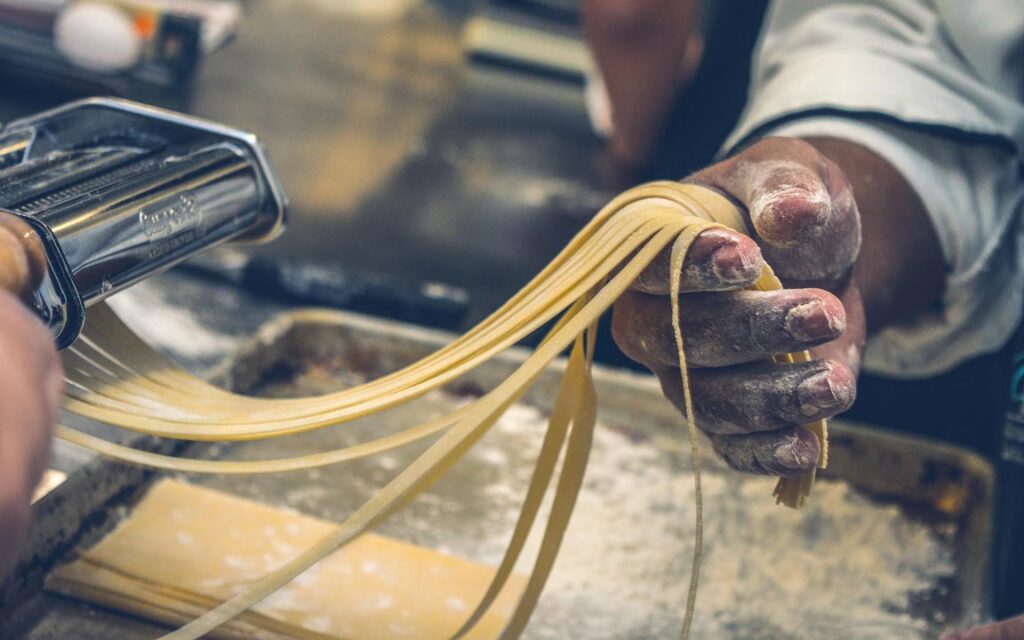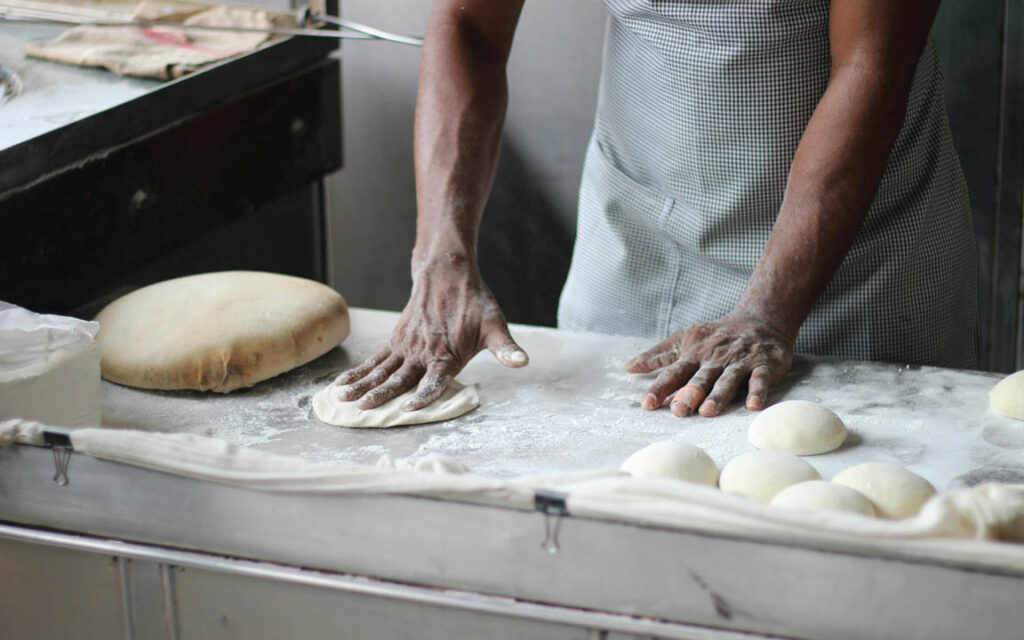It looks harmless. Soft, white, smooth. It’s in your morning toast, your favourite biscuit, the noodles you love, the street-side momos you can’t resist. But maida (refined white flour) isn’t just hiding in your food—it’s hiding a slow, silent danger.
For most people, maida is just another kitchen ingredient. But what if we told you it behaves like a sweet-talking enemy inside your body?
Let’s peel back the surface. Let’s look at what maida actually does once you eat it. And why your body might already be screaming for you to stop.
What Is Maida & How It’s Made?
Maida is not just ordinary wheat flour. It’s what remains after wheat is stripped of its fiber, bran, and nutrients. What you’re left with is the starchy white core — extremely fine, ultra-processed, and shockingly empty in nutrition.
To make it look snow-white, it’s often bleached using chemicals like benzoyl peroxide. Nutrients? Almost zero. Fiber? Gone. Enzymes? Destroyed. What remains is a quick-digesting, high-carb flour with a glycemic index of 85+.
What Happens Inside Your Body After Eating Maida?
Once you eat maida, your body is hit with a sugar bomb. Here’s what happens:
- Instant Blood Sugar Spike: Maida turns into glucose almost instantly. That gives you a quick high, followed by a crash.
- Insulin Overdrive: To handle the sugar spike, your pancreas releases a wave of insulin.
- Fat Storage Begins: Since your blood can’t handle too much glucose, it gets stored as fat.
- Cravings & Hunger: The crash after the spike leads to hunger pangs and more cravings—you eat again.
- Digestive Trouble: Without fiber, maida slows down digestion, causes constipation, and affects gut health.
Think about it. A slice of white bread, two cream biscuits, and a few fried snacks — it feels light, but it sets off a dangerous hormonal rollercoaster inside you.
Maida and Your Hormones
Maida doesn’t just impact your blood sugar. It messes with your hormones:
- Ghrelin (Hunger Hormone): Maida causes ghrelin to rise—you feel hungry even when you’re not.
- Leptin Resistance: Over time, your brain stops receiving the “I am full” signal.
- Cortisol Spike: Sugar crashes trigger stress hormones, increasing belly fat.
- Insulin Resistance: Over time, your body becomes numb to insulin—risking Type 2 diabetes.
This hormonal confusion explains why you keep eating junk, even when you want to stop.
Common Foods Where Maida is Hiding

It’s not just about cakes and cookies. Maida hides in foods you eat every day:
- White bread and buns
- Instant noodles and pasta
- Biscuits and crackers
- Pizza bases and rolls
- Street-side samosas, kachoris, momos
- Bakery items labelled “atta” (but 90% maida)
- Even baby foods in some cases
Many food labels hide maida under vague names like “refined wheat flour” or just “flour”.
Scientific Research: What Experts Say About Maida
- A study in the Indian Journal of Endocrinology found that high-maida diets raise insulin resistance in as little as 6 weeks.
- WHO lists refined grains as a risk factor for obesity and metabolic syndrome.
- Harvard research shows that diets high in refined carbs (like maida) increase the risk of heart disease.
- Maida’s glycemic index is above 85, almost as high as table sugar.
This isn’t grandma’s opinion. It’s cold, hard science.
👶 Kids, 🧑 Adults & 👵 40+ People: How Maida Hurts Each Group Differently
Maida doesn’t affect everyone the same way. Depending on your age, the damage shows up differently — from hyper kids to tired adults to health-risks after 40. Here’s how it silently harms each stage of life:
👶 Kids: Small Bodies, Big Damage
- Hyperactivity and poor focus (due to sugar spikes) —
Maida turns into sugar fast. When kids eat biscuits, noodles, or white bread, their blood sugar shoots up, making them overly active and restless. But soon after, sugar crashes — leading to irritability, mood swings, and lack of focus. This rollercoaster can mess with their brain development, attention span, and behavior in class. - Weak digestion —
Refined maida has no fiber. Kids’ stomachs are still developing, and maida slows down their digestion, causing bloating, constipation, or stomachaches. - Nutritional deficiencies —
Maida fills their stomach but offers zero nutrients. It replaces real food (like fruits or grains), leading to iron, calcium, and vitamin deficiencies, which affect growth and immunity.
🧑 Adults (20–40): Silent Weight and Hormonal Imbalance
- Rapid fat gain, especially belly fat —
Maida breaks down into glucose quickly. If not used for energy, it gets stored as fat, especially around the belly and liver. That’s why even people who “don’t eat much” still gain weight when they eat maida daily. - Mood swings and cravings —
Quick sugar highs followed by crashes make adults feel irritable, low-energy, and always hungry. You feel “hangry” more often — and end up reaching for more processed food. - Early signs of insulin resistance —
The more maida you eat, the more insulin your body produces. Over time, your cells stop responding well to insulin — this is insulin resistance, the first step toward type-2 diabetes.
👵 People 40+: Internal Damage Becomes Visible
- Higher blood pressure —
Excess maida leads to weight gain and inflammation, both of which increase blood pressure and put pressure on the heart. - Fatty liver and high cholesterol —
Maida-based foods raise triglycerides and bad cholesterol (LDL), contributing to fatty liver disease — even in non-alcoholic people. - Risk of pre-diabetes and heart problems —
After 40, your metabolism slows down. Eating maida daily means more sugar, more fat, and more pressure on the pancreas. The result? Rising risk of diabetes, heart attacks, and chronic inflammation.
The younger you start cutting down maida, the better. Your future body will thank you.
Why Experts Call Maida “White Poison”
Maida earns this name because:
- It’s a dead carb — zero fiber, zero vitamins, just calories
- It raises acid levels in the gut
- It feeds bad gut bacteria
- It creates addiction-like cravings
It’s engineered to feel good, taste good, and make you come back for more. But inside? It’s draining your health.
Healthy Alternatives to Maida
You don’t have to suffer. Here are great maida-free options:
- Whole wheat flour (real atta)
- Ragi (finger millet) flour
- Oat flour
- Almond flour
- Brown rice flour
- Amaranth (rajgira) flour
Start small. Swap 1 item a day. Your energy, skin, and digestion will show the change.
FAQ ❓
1. Is maida really harmful for health?
Yes. Maida is a refined flour stripped of fiber and nutrients. It causes blood sugar spikes, digestion issues, and increases fat storage.
2. What are the side effects of maida on digestion?
It slows down digestion, causes constipation, and disrupts gut bacteria because it lacks fiber and feeds bad microbes.
3. Is eating maida once in a while okay?
Occasional use is fine, but regular consumption leads to hormonal imbalance and metabolic issues.
4. How to identify maida in packaged food?
Look for terms like “refined wheat flour”, “enriched flour”, or just “flour” on labels. Most bakery and snack items use maida.
5. What are good substitutes for maida in daily cooking?
Whole wheat, ragi, oat flour, almond flour, and brown rice flour are healthier alternatives.
6. Can kids eat maida? Is it safe in small quantities?
Kids’ bodies are more sensitive. Even small amounts can affect focus, digestion, and long-term health. It’s better to limit it early.
Final Thought:
Your body is begging you to stop. Maida may look light and innocent, but every bite chips away at your hormones, digestion, and health.
You don’t need to quit everything overnight. But the first step? Awareness.
And you just took it. 📏
📢 Call to Action:
If you care about someone who lives on biscuits, bread, or bakery food—share this blog with them. You might just save their future health.
Comment below: How often do you eat maida daily? And what’s the first food you’d like to replace?




